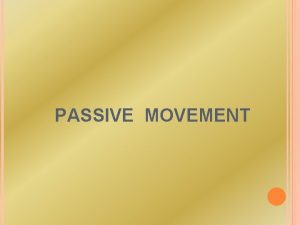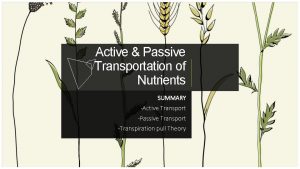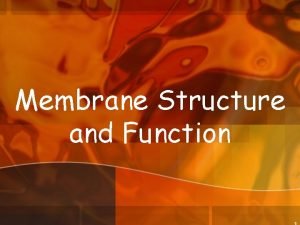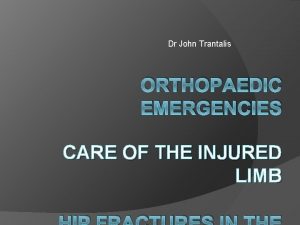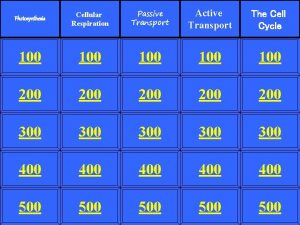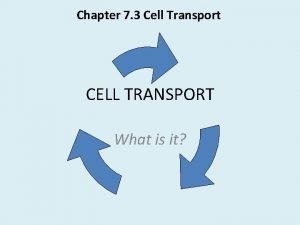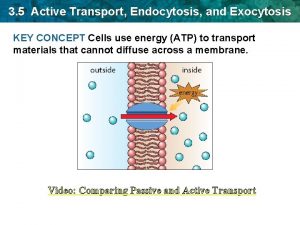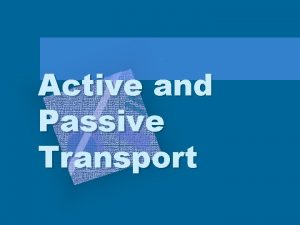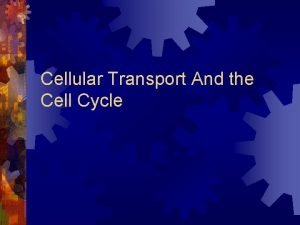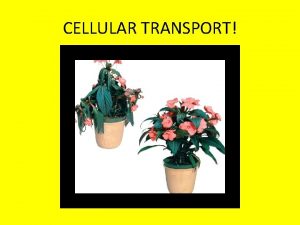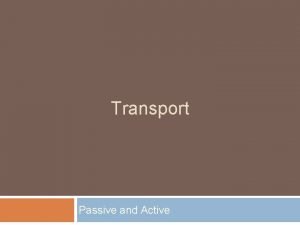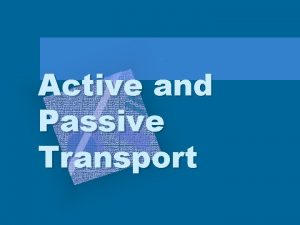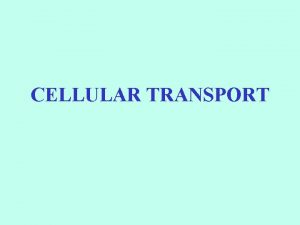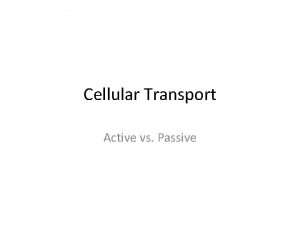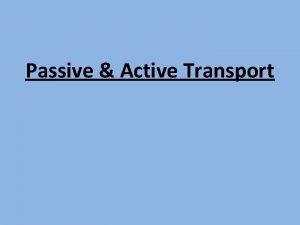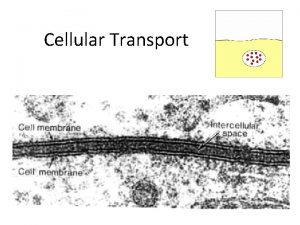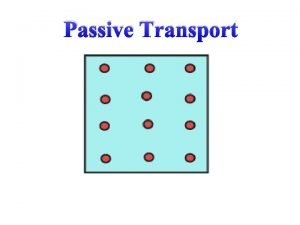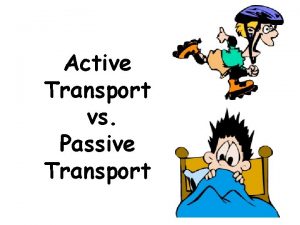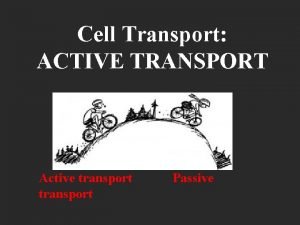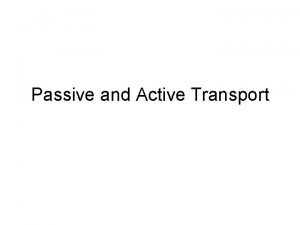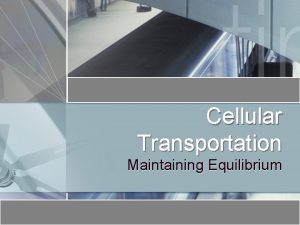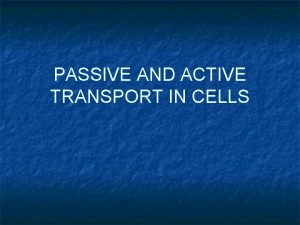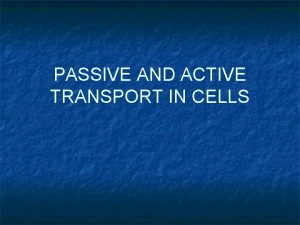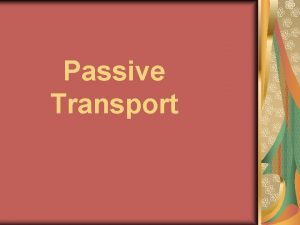Cellular Movement Passive and Active Transport Passive Transport




















- Slides: 20

Cellular Movement Passive and Active Transport

Passive Transport l Does NOT require ENERGY to move particles into or out of a cell l Movement of particles from HIGHER concentration to LOWER concentration l DIFFUSION – movement of particles l OSMOSIS – movement of water

DIFFUSION l The process in which molecules move from areas of HIGH concentration to areas of LOW concentration

DIFFUSION l Example: Smell of baking cookies from the oven moving through the house.

OSMOSIS l The diffusion of water molecules through a membrane

OSMOSIS l Movement of WATER from a HIGHER concentration to a LOWER concentration l Example: Plant taking in water during a rainy day.

Let’s Practice…

Let’s Practice… l The concentration of oxygen particles inside a cell is 45 percent and outside the cell is 30 percent. What will most likely happen?

Let’s Practice… l The concentration of water molecules inside a cell is 80 percent and outside the cell is 25 percent. What will most likely happen?

Let’s Practice… l The concentration of hydrogen particles inside a cell is 33 percent and outside the cell is 62 percent. What will most likely happen?

Equilibrium l In all cases, cells want EQUILIBRIUM! Too much (or too little) of a good thing is BAD for the cell!

When do the molecules stop moving? EQUILIBRIUM = molecules are evenly distributed

Active Transport l Requires ATP ENERGY to move particles into or out of cell l Movement of particles from LOWER concentration to HIGHER concentration l Endocytosis l Exocytosis

ENDOCYTOSIS l Cell membrane encloses a vesicle filled with particles and absorbs it, BRINGING IT INTO the cell

EXOCYTOSIS l Cell membrane encloses a vesicle filled with particles and PUSHES IT OUT of the cell


Active Transport Example: l. A person trying to squeeze into an already crowded elevator! l It takes ENERGY to do so!

What happens to cells when put in salt water? l This is why you do not want to drink salt water when you are lost at sea!

Water moves out of the cell to try to reach equilibrium. The cell dries out, shrinks, and dies!

 Primary vs secondary active transport
Primary vs secondary active transport Primary active transport vs secondary active transport
Primary active transport vs secondary active transport What is passive transport
What is passive transport Passive transport vs active transport venn diagram
Passive transport vs active transport venn diagram Active vs passive transport venn diagram
Active vs passive transport venn diagram Endocytosis vs exocytosis
Endocytosis vs exocytosis Indications of passive movements
Indications of passive movements Bioflix activity membrane transport active transport
Bioflix activity membrane transport active transport Isotonic in biology
Isotonic in biology Active and passive transport
Active and passive transport Difference of active and passive transport
Difference of active and passive transport Dr trantalis
Dr trantalis Active or passive transport
Active or passive transport Is photosynthesis active or passive transport
Is photosynthesis active or passive transport Active or passive transport
Active or passive transport Exocytosis active or passive transport
Exocytosis active or passive transport Exocytosis active or passive
Exocytosis active or passive Active vs passive transport
Active vs passive transport Cellular transport and the cell cycle
Cellular transport and the cell cycle Electron transport chain cellular respiration
Electron transport chain cellular respiration Tonicity foldable
Tonicity foldable






